
By Leith van Onselen
The Australian Bureau of Statistics (ABS) released the December Housing Finance data this morning, which registered a contraction of mortgage demand on the back of New South Wales (NSW) first home buyers (FHBs).
As I noted last month, much of the recent bounce in housing finance commitments was due to the NSW Government’s announcement in September 2011 that it would end the generous stamp duty concessions provided on pre-existing dwellings on 31 December 2011. Predictably, this announcement led to a surge of buying from NSW FHBs in the three months to December, which also acted to push-up the national figures. However, with the NSW stamp duty concession now over, first home buyer demand fell in January, reducing overall finance commitments in the process.
According to the ABS, in seasonally adjusted terms, the number of commitments for owner occupied housing finance fell by -1.2% in the month of January, with the total value of dwelling finance commitments excluding alterations falling by -2.3%. This is not a healthy housing market.
Below are charts summarising the situation at the national level. The first chart shows a breakdown of the number of housing finance commitments by component. You can see that much of the increase in housing finance commitments over the past year has been driven by refinancings:
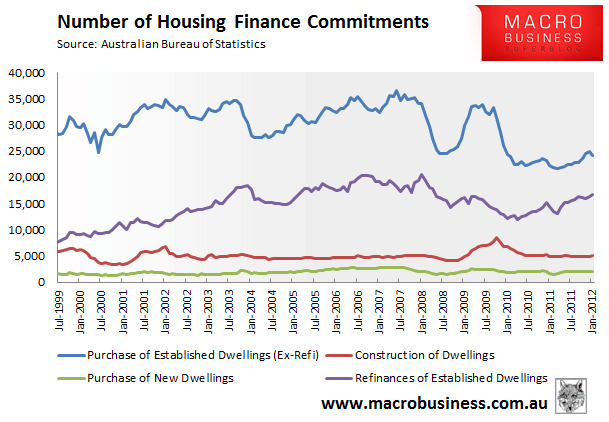
Nevertheless, until this month, the number of housing finance commitments (excluding refinancings) has also trended upwards since February 2011 in a small cyclical trend; although they remain around 12% below the 5-year moving average:
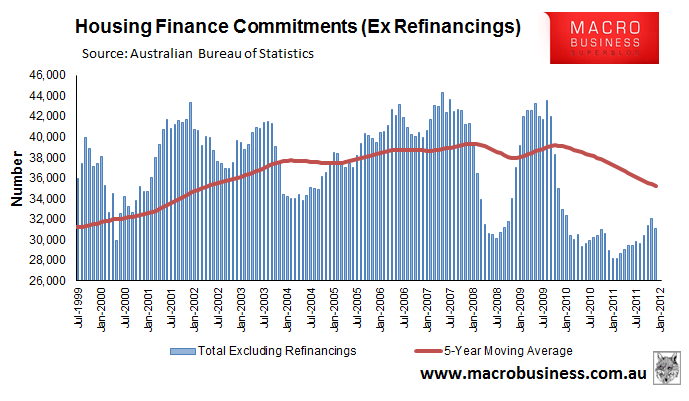
Much of the recent upswing in housing finance commitments has been driven by increased activity from First Home Buyers (FHB), a cohort that has increased their share of total owner occupied housing finance commitments from 16% in February 2011 to 20% in January 2012; although this is down from 21% in December 2011:
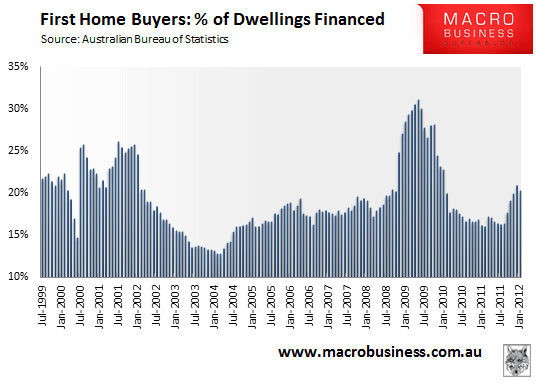
As noted above, the fall in the share of FHBs has been driven by a slump in demand from NSW buyers, partly offset by rises in Western Australia (22% up from 19% in December) and Queensland (21% up from 20% in December).
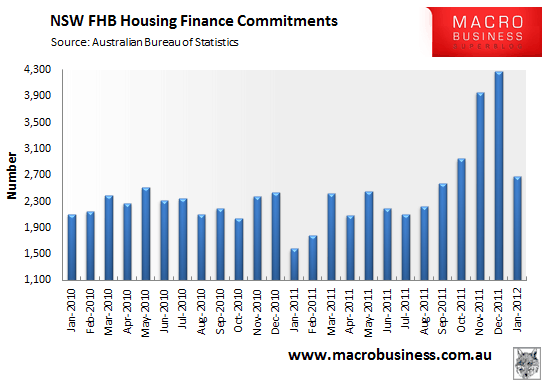
To illustrate the NSW FHB effect, consider the below charts. The first chart shows the number of housing finance commitments (excluding refinancings) by state (Note: data is not seasonally adjusted):
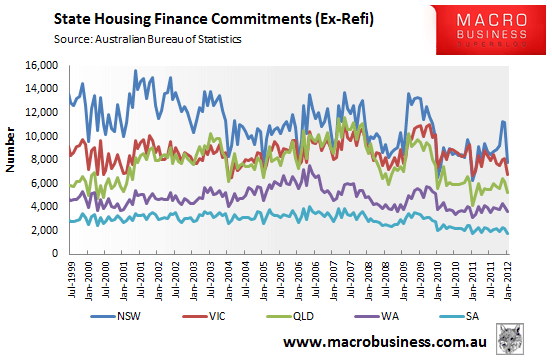
As you can see, the overwhelming majority of the recent upwards movement in finance commitments and the latest fall has been driven by NSW.
The NSW FHB effect is even more obvious in the below chart, which shows the number of FHB housing finance commitments by state (again, not seasonally adjusted). Note the large rise in NSW in the final three months of 2011 as well as the steep fall in January:
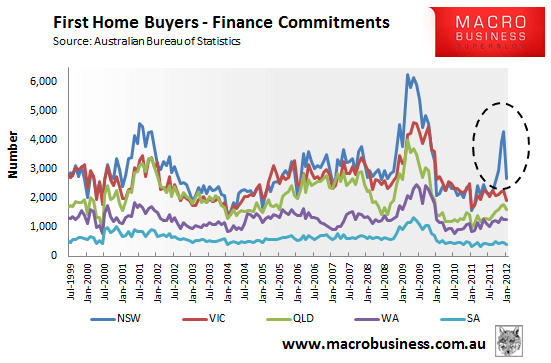
Unfortunately, the ABS only provides the value of investor finance commitments. This series declined by 7% in January, fully offsetting December’s 7% rise:
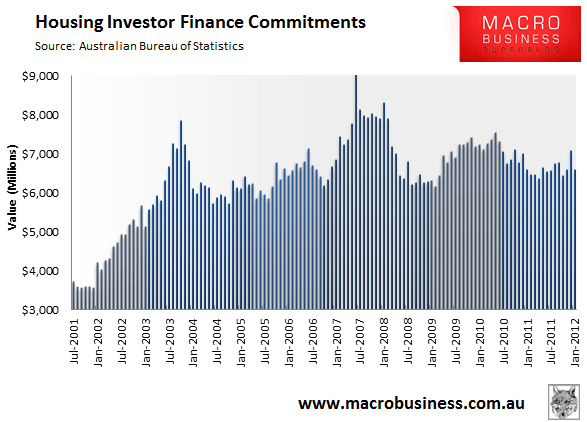
As I noted last month, the overall upswing in housing finance commitments to December 2011 was driven, to a large extent, by increased NSW FHB activity as buyers rushed to beat the 31 December 2011 deadline for the removal of stamp duty concessions.
Now that this deadline has passed, we are experiencing pull-back from NSW FHBs, which is acting to reduce overall finance commitments, which clearly shows the underlying weakness of the Australian housing market.

